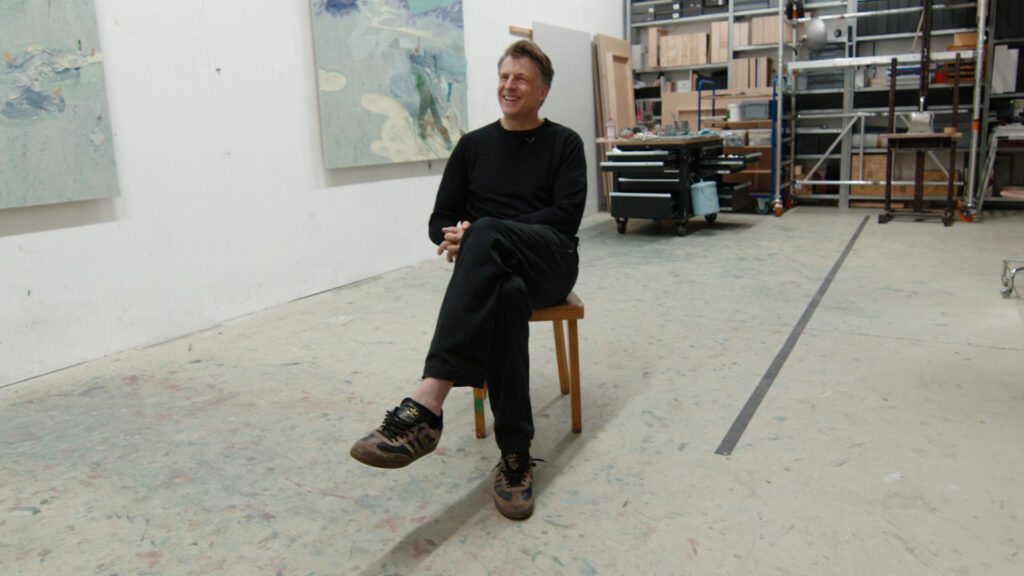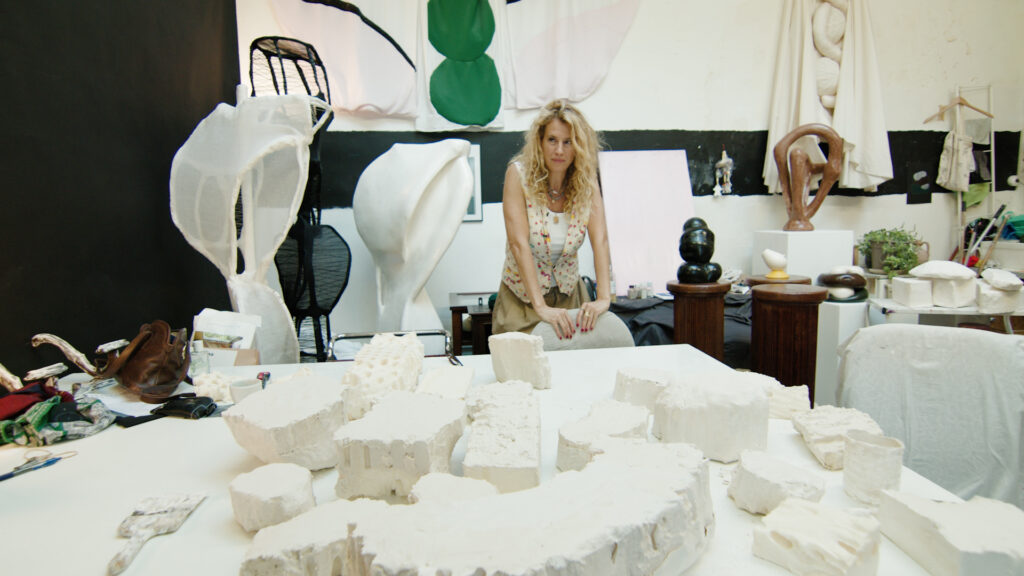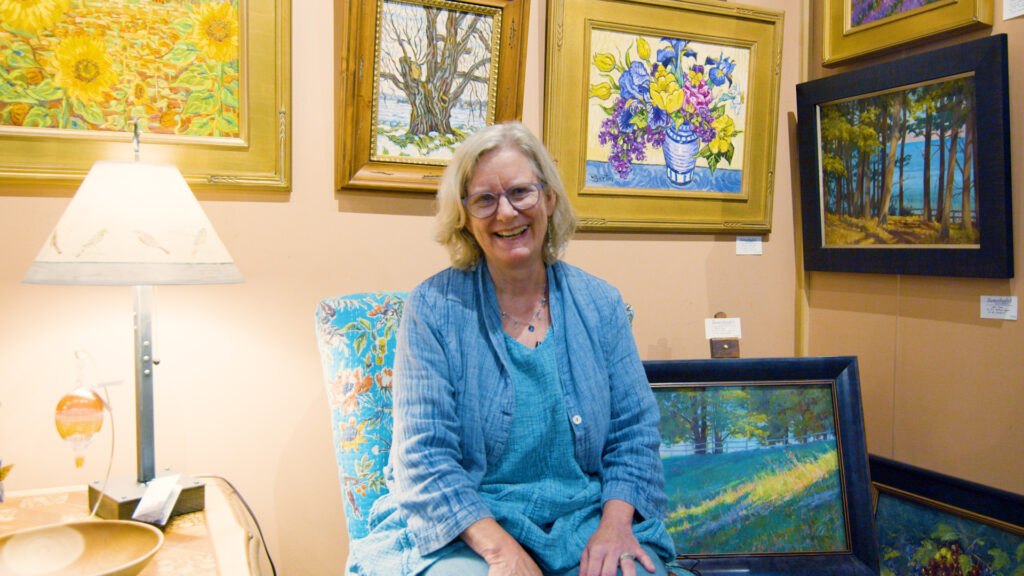Meeting Zuriel Waters, you notice first his peace. An understanding of who he is and his works within the world. That same quiet focus runs through his art. Waters works across fabric sculpture, building forms that seem simple at first but reveal layers of rhythm, balance, and curiosity the longer you stay with them.
Waters grew up between Portland, Oregon, and San Diego before heading east to study at the Rhode Island School of Design. At first, he entered college as a music student, following in the path of his father, a composer. But music programs felt narrow to him. Visual art felt freer. He had always drawn comics in high school, sketches since childhood, so shifting into painting and sculpture felt natural.
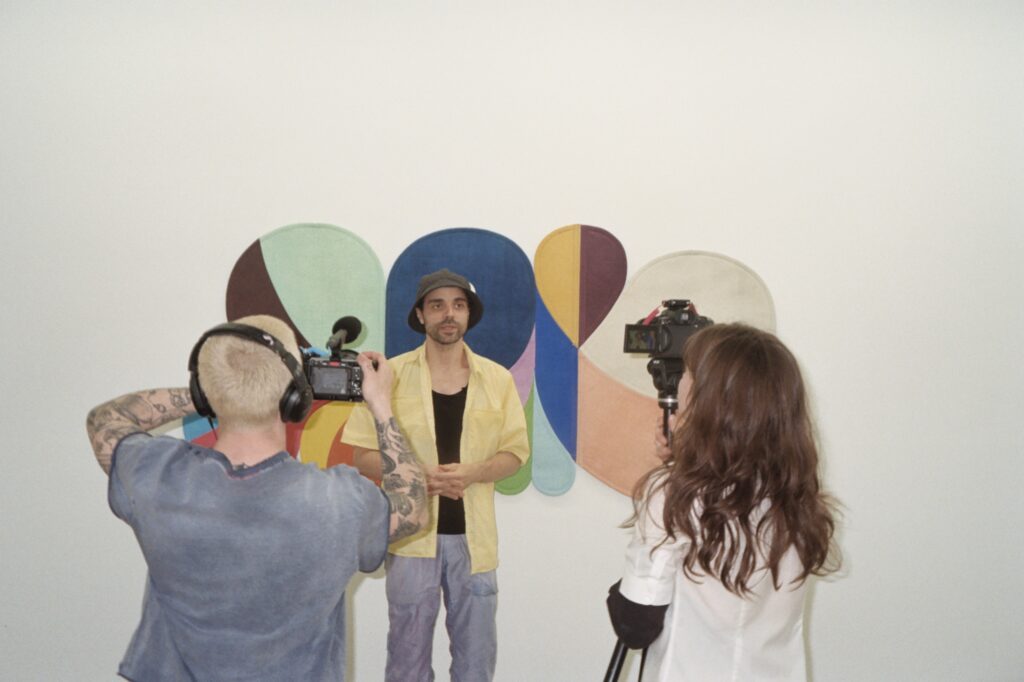
Even as he moved into visual work, music never left. He still plays saxophone, and while he doesn’t map sound directly onto his paintings, others often describe his forms as rhythmic. For him, the difference between the two practices is clear. Art-making is solitary, “just like you reflecting back at yourself,” he explains. Music is collective, built on exchange. The two disciplines give him balance: one inward, the other outward.
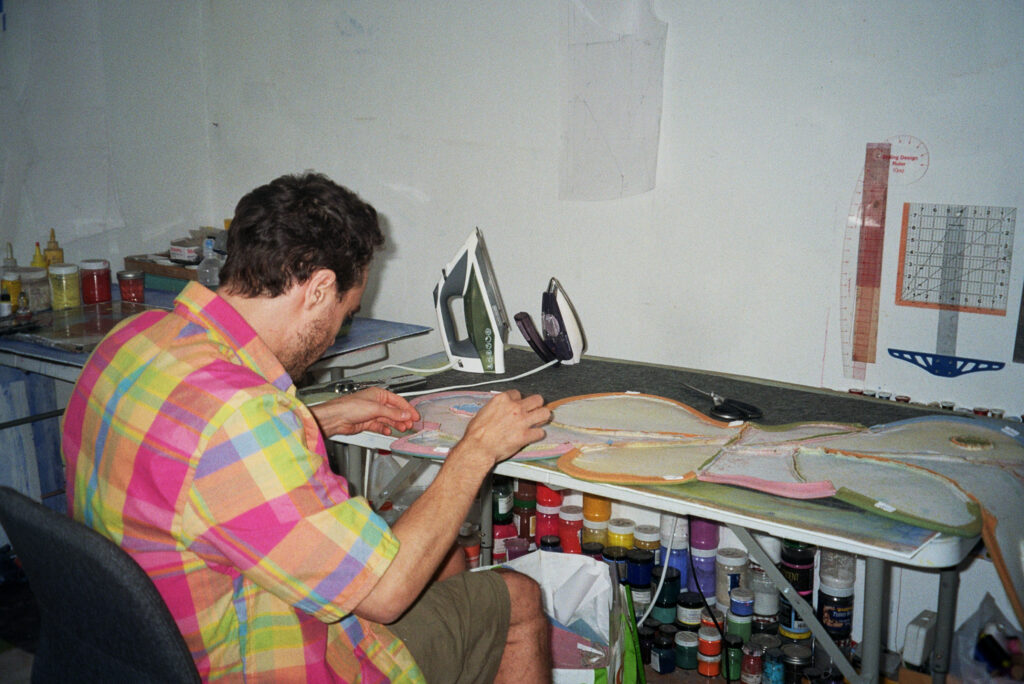
His sculptures carry that duality. Many of them stand upright, as if planted, curved, or rising. He thinks of them as figures—“like aliens or some kind of robot or something.” When he began turning them sideways, he felt the shift immediately. “They’re kind of like levitating… so when they became horizontal, I was like, what are they? Are they lying down or something?” Out of that question came new images: clouds, dragons, jellyfish. One work, ‘Moon Jelly‘, became central, giving rise to both a body of work and the title of his show ‘Jello Moon‘.
The phrase tied his ideas together. The forms reminded him of vintage jello molds—those rounded, symmetrical shapes from mid-century kitchens. At the same time, “Jello Moon” carried a sense of play and optimism, what Waters calls “a 50s space age optimism.” It was both domestic and cosmic, familiar and strange.
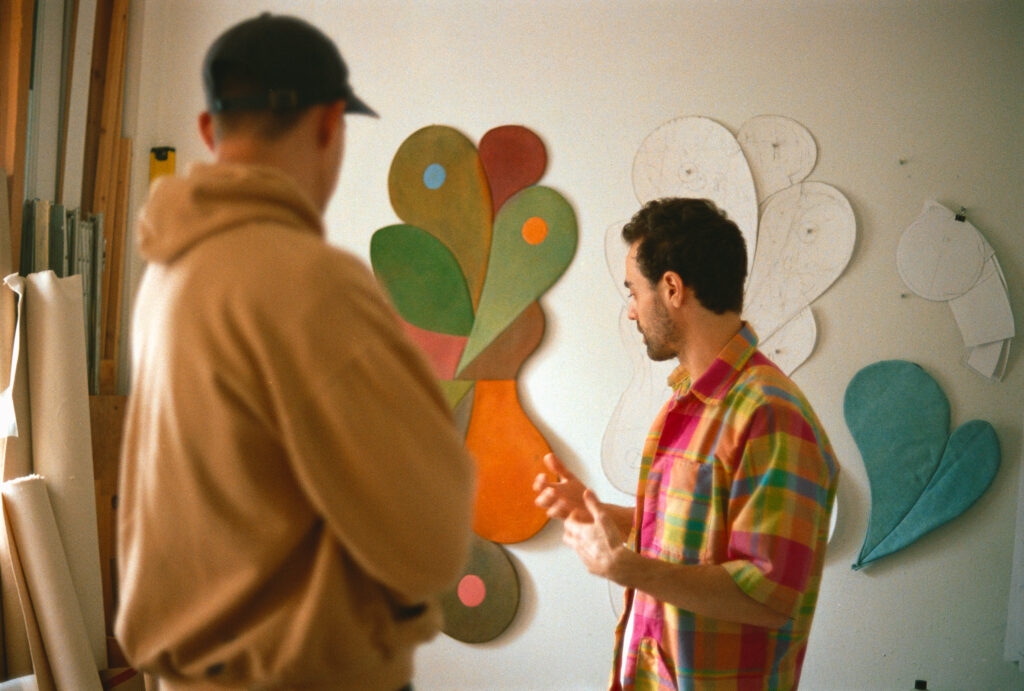
Viewers bring their own readings. Others connect them to graffiti, linking the horizontal works to the city’s visual language. Waters embraces those interpretations; they expand the work beyond what he planned.
Process is at the heart of it. Recently, he has been experimenting with ways for pigment to soak into fabric rather than sit on top of it. This makes the pieces feel closer to garments—flexible, durable, lived-in. He points to denim as a reference: dyed into the fibers, reinforced, faded through wear. For Waters, it’s a meeting point between painting and material culture.
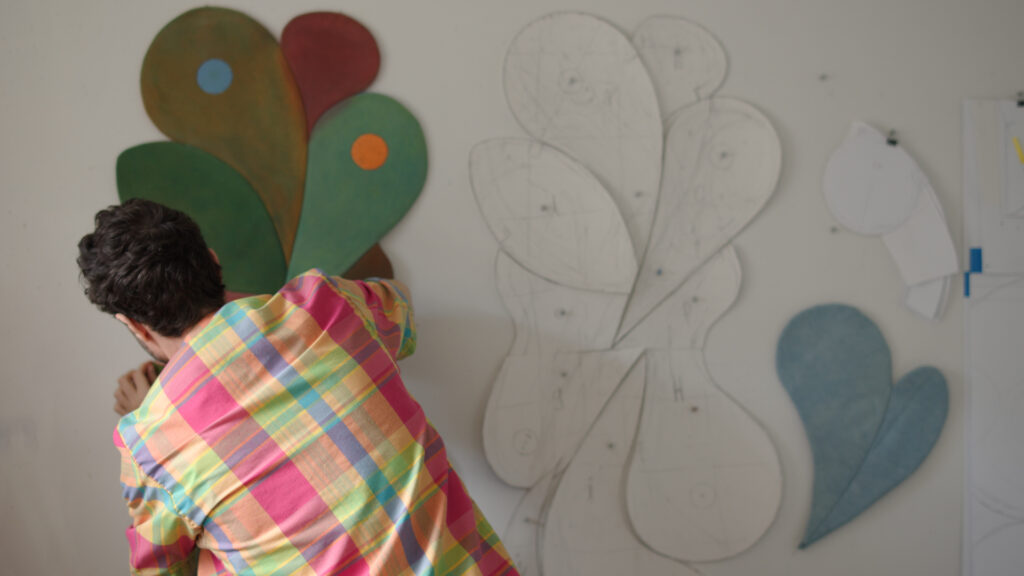
This method shifts how color functions. Instead of layering paint on top, he works subtractively, starting from light and moving toward dark. The approach makes it harder to achieve glow, but it creates depth and permanence. “It’s a marriage with the textile it’s on,” he says. Every choice—the weave, the strength, the saturation—shapes the outcome.
Waters often describes his sculptures as “app updates,” each one a refinement of the last. Lately, he’s been trying to remove visible top-stitching, a detail that changes the look of the pieces. “I see them without the top stitch when I’m making them and I’m like, ‘Oh, I love this.’ And then I put the top stitch on, I’m like, ‘Oh, it’s still pretty good.’” That push and pull keeps the work moving forward.
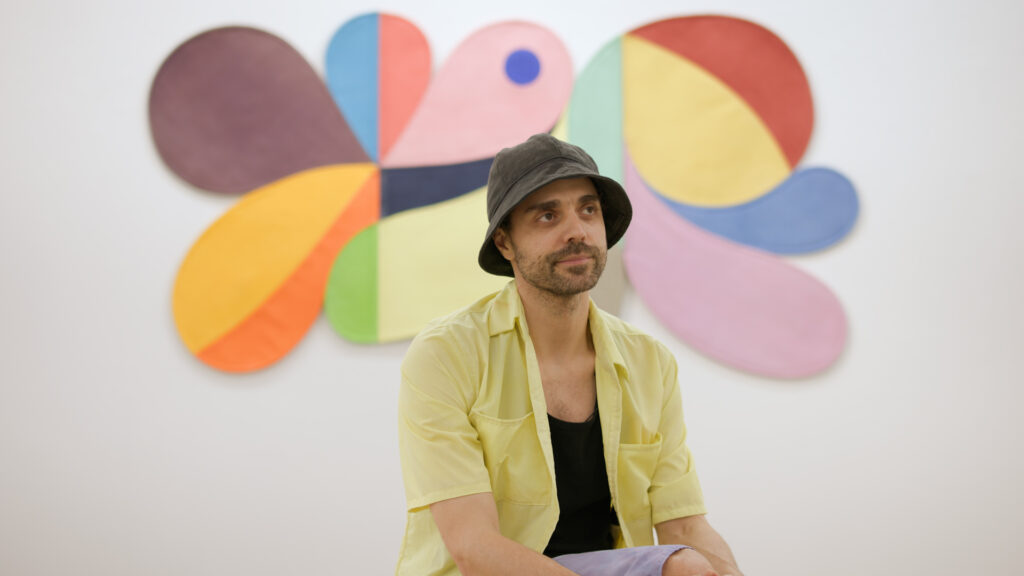
What ties it together is his pursuit of effortlessness. He wants the pieces to look immediate and simple, but hold complexity on closer view. “I want it to seem simple, but then you can’t figure it out,” he repeats, describing both his challenge and his goal.
His sculptures are at once jello molds, moons, robots, jellyfish, angels. They’re playful, but also serious in craft. They draw viewers in with their softness and color, then keep them lingering in uncertainty. Each work feels complete on its own, but together they build a language—a rhythm that is visual, not musical, yet carries the same pulse.
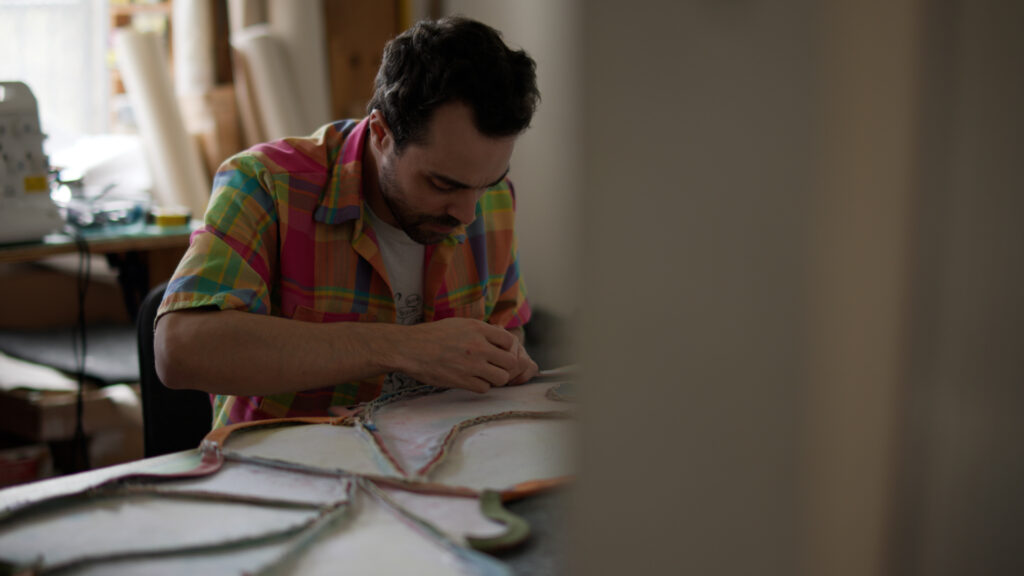
For Waters, it’s never about a grand statement. “They’re just one piece to the next,” he says. But in that steady progression, he is creating objects that look light, even floating, while grounding themselves in fabric, pigment, and form. Simple at first glance. Never simple for long.
Sebastien Jupille
Sébastien Jupille’s story begins simply. As a kid he drew constantly, not because anyone pushed…
Eva Dixon
From the beginning, Eva Dixon’s relationship to making things was tied to the rhythms of…
Marc Sparfel
Marc Sparfel’s story begins with an act of discovery, the kind that happens quietly, without…
Ruprecht von Kaufmann
In his Berlin studio, Ruprecht von Kaufmann works surrounded by the quiet textures of linoleum,…
Amélie Caussade
Amélie’s journey as an artist began unexpectedly, born from a moment of sudden disruption. In…
Julie Stoppel
Julie Stoppel never planned to become an art teacher, or a gallery owner for that…




